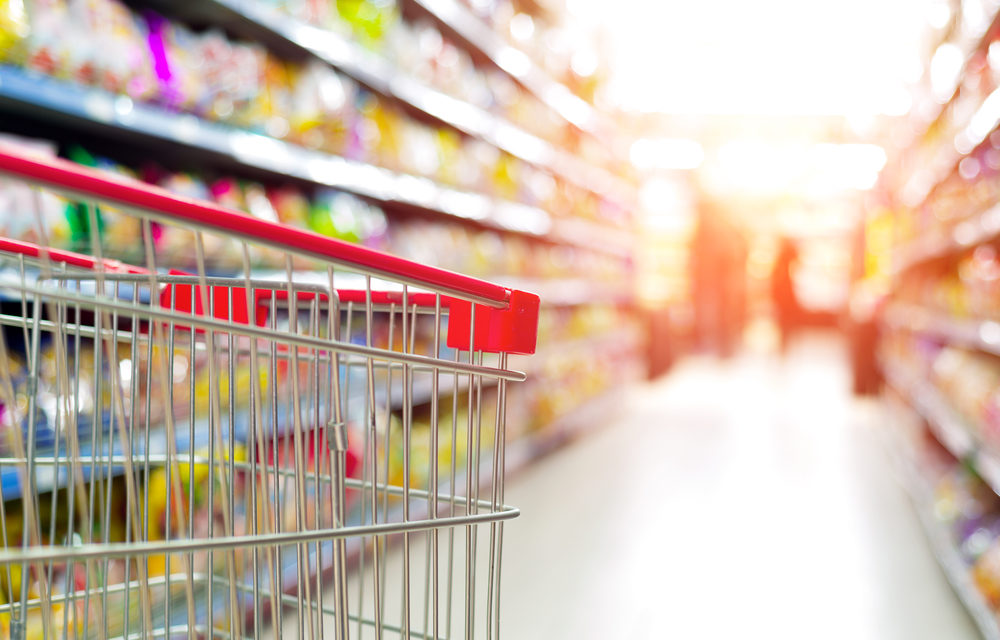Warehouse retailers pick up sales
As retailers across the board hop on the organic bandwagon, natural food pioneers are losing their dominant hold of the market.
According to new data from Nielsen, the so-called “premier natural and fresh” retailers, a group that includes chains such as Whole Foods, saw its share of the organic market decline by 3.4 percentage points in the past two years to 26%. That decline was enough to knock it from the top spot in the organic market.
Now the biggest channel for organic foods is warehouse clubs, which include retailers like Costco. The segment saw its share of the organic market rise 0.8 percentage point the past two years to 27%, Nielsen’s data showed.

The data is the latest sign that organic goods are becoming more mainstream and aren’t just for high-income shoppers. Traditional supermarkets, mass merchandisers and discount grocery segments each saw their respective share of the market inch higher to a combined 25%, up 2 percentage points from two years earlier, according to Nielsen.
Indeed, retailers from Walmart to Kroger have touted organic as an increased product focus area. Walmart on its website is pitching September as “Organic Harvest Month” as the discount giant displays items from organic ketchup to organic milk.
In total, US sales of UPC-coded organic products jumped 9.8% in the year ended Sept. 2 with the number of units sold increasing 11.4% during the same period, Nielsen data showed. Its data indicated 88% of US households have bought organic food and beverages in the last year.
Organic Products: Niche No More
A Morgan Stanley study earlier this year featured similar findings: Among consumers who identify themselves as their households’ grocery shopper, the percentage who said they never shopped for organic groceries has declined each year to 22% this year from 34% in 2014. Morgan Stanley estimated organic and natural food product sales, totaling about $75 billion in 2016 sales and 9% of the overall “food at home” market, to grow an average of 8% a year through 2020 to represent 12% of the US food-at-home sales.
On the product front, while fresh departments have been the leading drivers of organic demand, the Nielsen study showed organic sales are sprouting across a variety of product categories and different aisles of stores. For instance, while sales of meat and produce with organic claims each jumped 10% in the past year and sales of organic deli items surged 31%, organic frozen and dairy items saw their respective sales rise 6% each. Packaged grocery food items with organic claims also saw their sales jump 13%, according to Nielsen.
Indeed, Euromonitor data showed that while the $26.1 billion in 2016 organic fresh food sales were 66% more than those of the combined $16.1 billion in organic beverage and packaged food sales, the market research firm forecast organic beverage and packaged food sales will continue to rise about 5% each year through 2021 after seeing an average 7.8% annual growth since 2011.
That’s far above the 1.1% average annual growth through 2021 Euromonitor projects for the total store-based US grocery retail sales.
Not surprisingly, the Nielsen survey showed that more than two-fifths of consumers said higher price tag is a key barrier to their shopping organic. For instance, organic eggs usually cost more than double that of conventional eggs while organic milk is 87% higher than their non-organic equivalent. Prices for organic vitamins and baby foods are 40% and 20% higher respectively, Nielsen said.
But the equation is changing. As retailers from Walmart to Costco stock more of their own cheaper private label organic offerings, organic is becoming more affordable. That’s on top of the rise of chains including Trader Joe’s and Lidl that are expected to gain more share of the US grocery market thanks to their mostly store branded organic and natural assortment.
The price difference can be significant. When comparing the average basket prices of branded versus private-label organic products, Nielsen found that the private-label basket cost 18% on average less than the branded basket. But for some categories, the price gap is even more dramatic. For example, branded organic baby food can cost almost 60% more than the store brand version while ice cream price differences can be some 26%.
Private label or not, organic is poised to become even more mainstream in the wake of Amazon’s Aug. 28 purchase of Whole Foods. Since the acquisition, Amazon has cut prices of many items, from organic bananas to organic avocados, at Whole Foods, known for its traditional nickname as Whole Paycheck. Amazon has also begun to stock many of Whole Foods’s 365 private label line, including organic turkey breast and organic Monterey Jack cheese, on AmazonFresh.
“We’re determined to make healthy and organic food affordable for everyone,” Jeff Wilke, CEO of AmazonWorldwide Consumer, said in a statement in late August.

